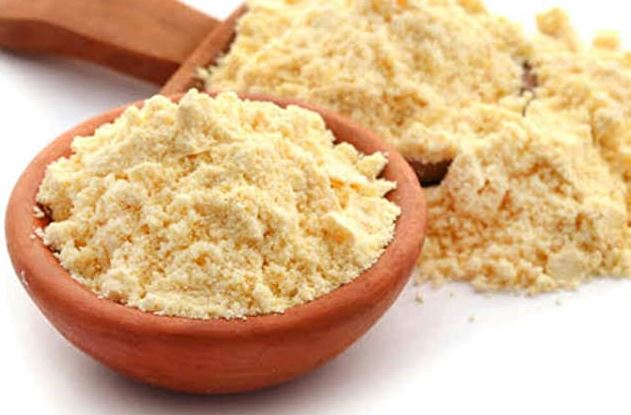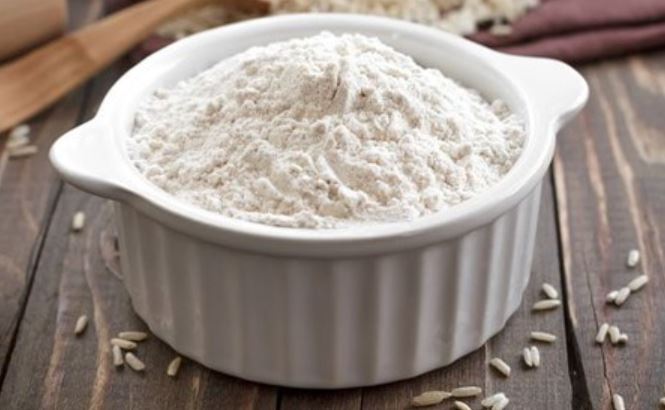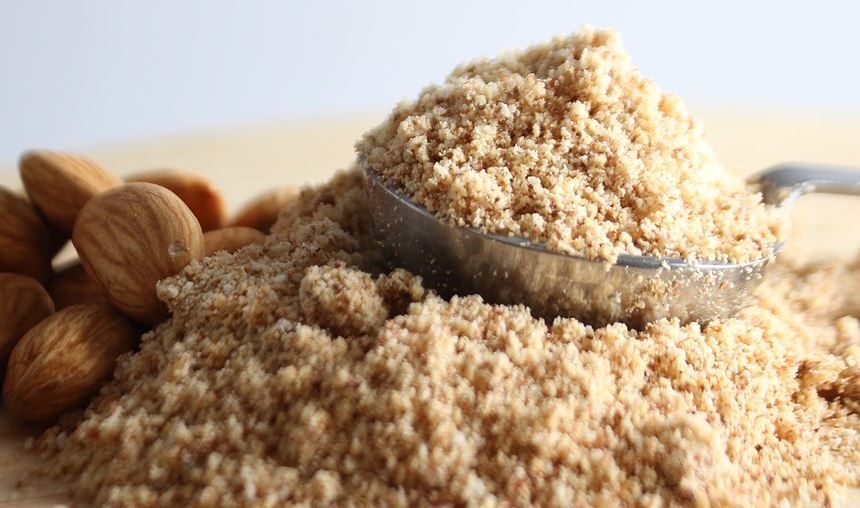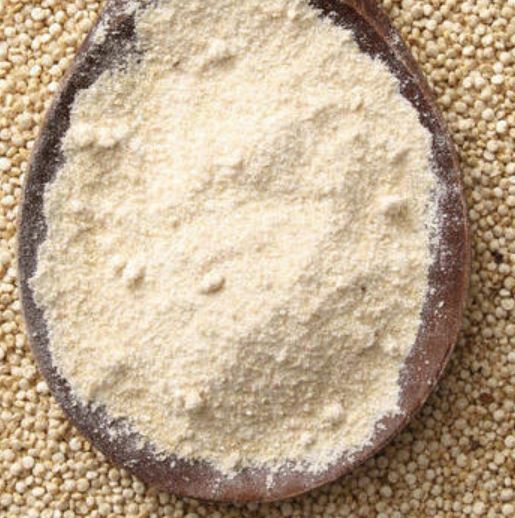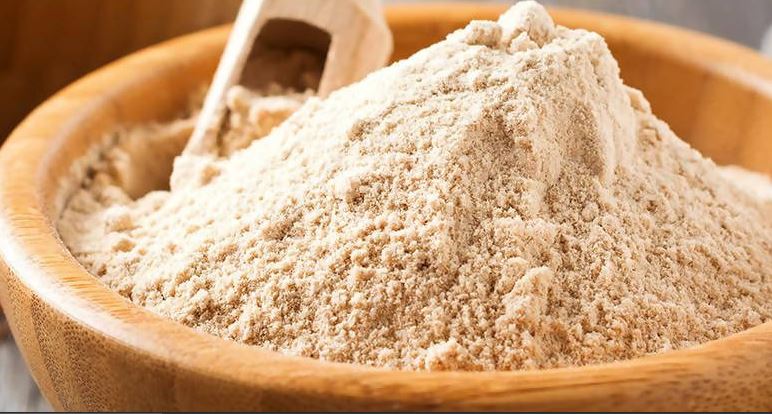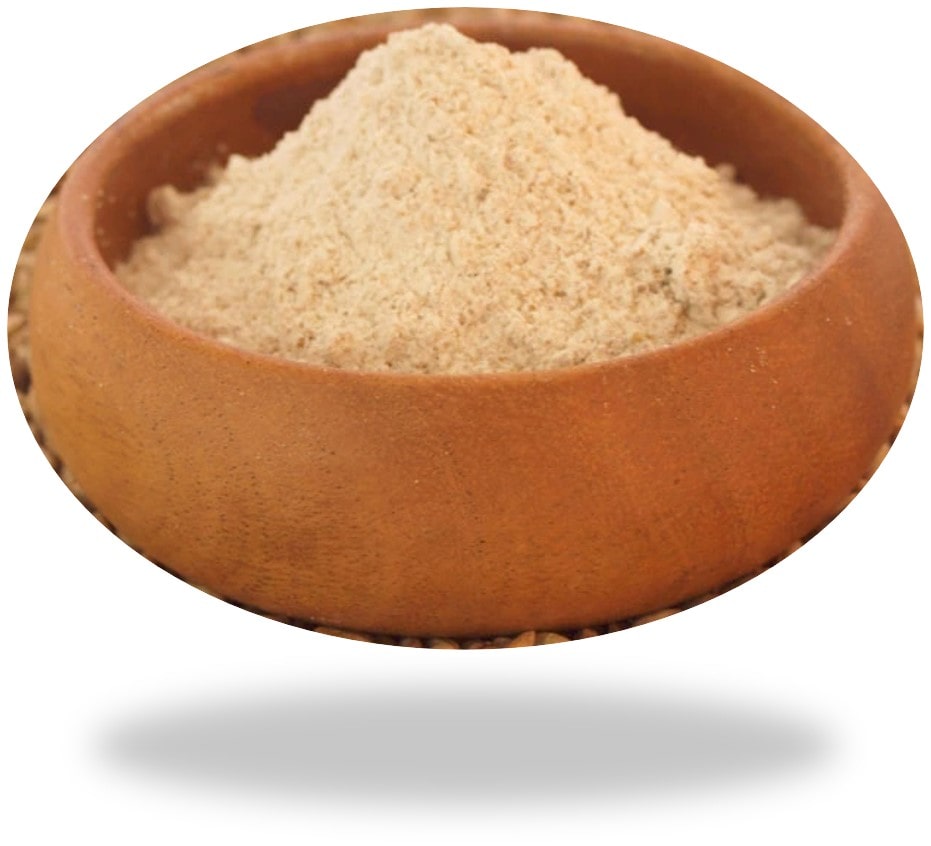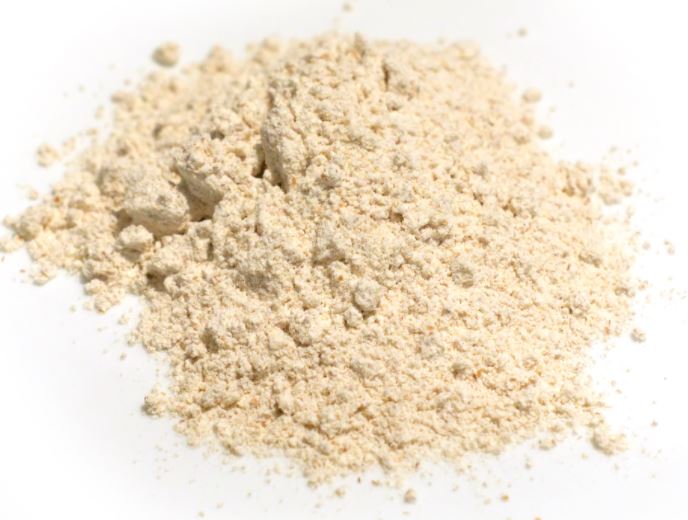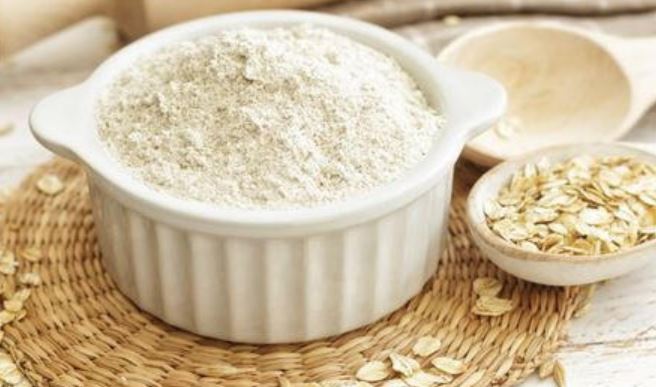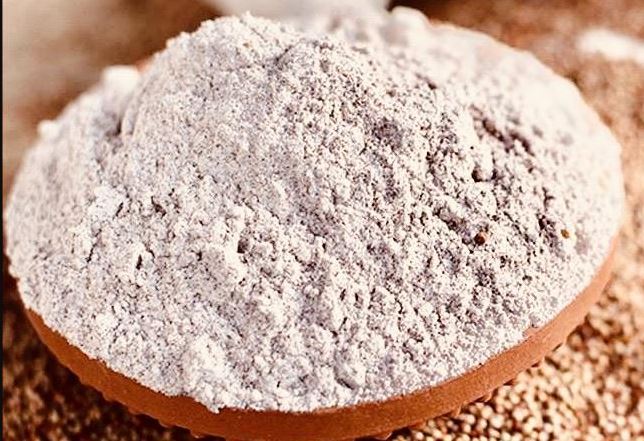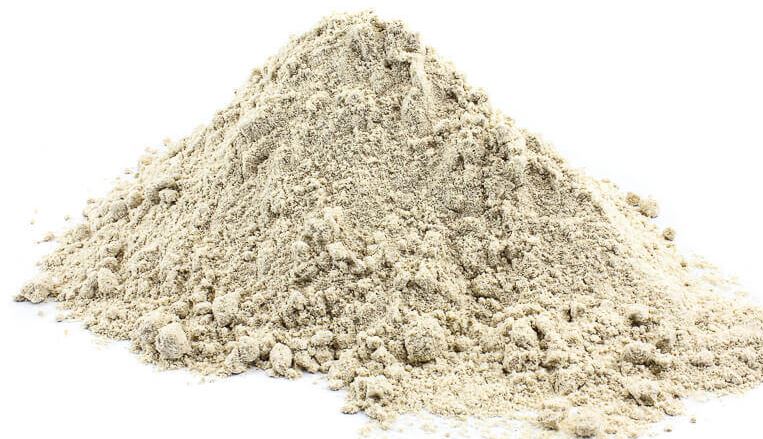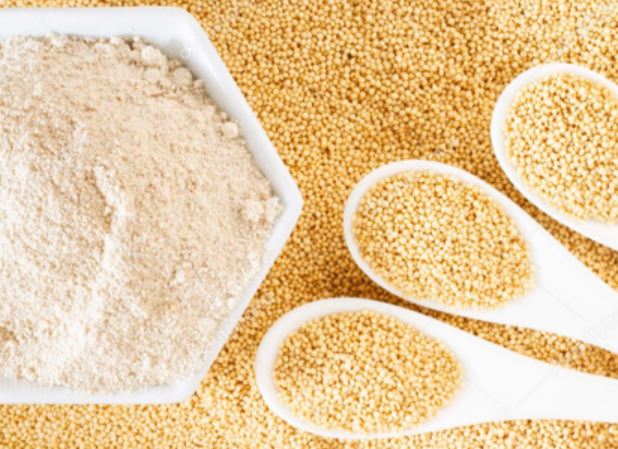Flour is the key ingredient in every bakery product. It helps in binding all other ingredients together and often acts as a base for various bakery items. All-purpose flour is one of the most adaptable flours you can use: Whether you’re baking cookies or making a pizza, the white flour’s versatility makes it suitable for all purposes. It forms the right amount of gluten to lend structure to baked goods without being too dense. This is why it is preferred in most recipes.
Many of us bother about eating healthy and staying fit while enjoying the deliciousness of the food we love. But white flour used in baking forms a high amount of gluten and is difficult to digest. For various reasons, we rely on substitutes of the regularly used all-purpose flour. One can replace the white flour with Substitute Flour like that of different grains and nuts. These substitutes are not only a healthier option but can be your go-to option at the time of the white flour crisis as well.
The uniqueness in the texture, aroma, and taste of these substitutes can make baking a more delicious process. Some most satisfactory flour substitutes to get baking are listed below. Don’t be afraid to experiment!
12 Delicious Flour Alternatives to do Baking
1. Coconut Flour as alternative
→ Completely Gluten-Free substitute to Wheat brown or white flour
Coconut flour is a finely ground, soft, powdery texture produced from dried coconut meat. It is also a natural byproduct of coconut milk production. It is low in carbohydrates and is a popular alternative to regular flour. It is highly rich in protein, fiber, and fat. This combination of nutrients present in the flour makes it so filling.
It is gluten-free and can be used to bake cakes, cookies, bread, and muffins. It would be best if you relied on established recipes while working with coconut flour. It is highly absorbent and therefore can have a drying effect on baked goods. The best way to avoid this dryness is to use a lot of eggs while baking. It is preferable to sift the flour before baking to prevent the grittiness in the baked products.
It becomes a bit tricky to work with coconut flour as it isn’t a grain-based flour and is highly absorbent. It is also rich in Salicylate, a chemical found in many wholesome foods like citrus, coconut, and strawberries. Some people are allergic to Salicylate, so if you’re sensitive to these compounds, it is best to avoid coconut flour cooking or baking.
Some quick baking tips for using coconut flour are listed below:
- Use more eggs: It adds moisture to the flour and provides a good structure to your baked items.
- Use additional liquid: Being highly absorbent, coconut flour may make your items excessively dry. It is always preferred to use an extra liquid.
- You can substitute coconut flour for all-purpose flour at a 1:4 ratio while adding one egg for every ¼ cup of coconut flour.
- You can also use natural egg replacements like vinegar and baking powder.
- You can pair it with other alternatives like Almond flour, hazelnut flour, cassava flour, etc.
2. Chickpea- Flour substitute
→ Chickpea is also a naturally Gluten-free flour option to replace Wheat.
A bag of Chickpea flour should be constant in your pantry. It is not only gluten-free but is highly rich in protein. Chickpea, when ground into flour, creates a whole new world of possible recipes. It has a nutty texture and can quickly transform into everything.
Chickpea flour is an easy-to-use alternative with several health benefits, from thin tortilla flatbreads to thick vegetable stuffed pancakes. It has nutritional benefits, versatility, taste, and texture. Often gluten-free flours do not provide an excellent texture to the baked items. Still, Chickpea flour is a naturally dense flour, and its denseness and innate binding tendencies lend the bakery items a sturdy yet tender texture in all cases.
It has recently gained popularity as a pantry staple all across the globe. It can be combined with other gluten-free flours to increase the protein and make baking easier and delicious. It can be used with both sweet and savory bakery products.
Some quick baking tips for using Chickpea flour are:
- Cook or dry roast the flour before baking. Raw Chickpea flour has a terrible taste and can spoil your batter but once cooked; it will magically turn delicious.
- Make sure to cook the battery correctly. A slightly uncooked texture will not work in taste.
3. Brown Rice Flour
→ Naturally, best Gluten-free flour to perform baking instead of Wheat
As the name suggests, Brown rice flour is a fine grinder texture made out of brown rice. It can anytime substitute for conventional wheat flour or all-purpose white flour. It works best in bread, muffins, and cookies. Being gluten-free, brown rice flour needs additional ingredients that will help you bake goods to cohere. Some people prefer adding oil, Apple sauce, or an egg.
Rice flours are dry in texture and, therefore, absorb more moisture than conventional wheat flours. It, therefore, requires adding additional liquid to increase the amount of moisture in the baked items. Brown rice flour baked goods tend to top rise very quickly, so no or a minimal amount of rising agent should be used while baking.
Some quick baking tips for using brown rice flour are:-
- Brown rice flour should be stored in an airtight container in the refrigerator. It spoils easily when exposed to moisture and can make odors from other food items stored together.
- Baked goods made out of brown rice flour can be crumbly in texture. Binding agents like arrowroot powder or eggs can be used to make your baked items more cohesive.
4. Almond Flour
→ Delicious, healthy Gluten-free flour to bake
Almond flour is perhaps one of the most versatile, low-carb flour and works well with cookies, cakes, and bread. Almond flour is ground almond nuts, full of fat and moisture, gluten-free, and a bit crumbly in texture. It is less dense than wheat flour and requires certain baking tips to get perfectly textured bakery products.
Some of these tips are listed below:
- Let the final baked product cool completely: The texture and cohesiveness of low-carb baked goods improve upon cooling. It is always advisable to let your baked items cool completely.
- Make sure you use all the ingredients only when they are at room temperature. If they are cold, your battery will have lumps and can become clumsy.
- Grease the pan well and keep an eye on the baking process and follow by checking it from time to time.
5. Quinoa Flour
→ Another Substitute to replace wheat flour and doesn’t have Gluten as well.
Quinoa flour is an awesome substitute for all-purpose flour as it is highly rich in protein and fiber. It is gluten-free and is quite bitter. It has iron and other trace minerals. It is quite expensive and is made by grinding Quinoa grains into finer particles to get flour. It is used as an alternative for all-purpose flour in weight loss and diabetes.
Some tips for using Quinoa flour while baking is listed below:
- Store the flour in an airtight container in the freezer. It can last about 5-6 months
- Toast it lightly in the oven or a frying pan to remove the bitterness from the flour
- Add xantham gum or cornstarch or mix it with other flours to have a good binding tendency.
6. Buckwheat Flour
→ Don’t get misinterpreted with its name, buckwheat is not a member of wheat and is naturally gluten free…
Buckwheat flour is a soft, powdery texture made from ground Buckwheat seeds which are highly rich in complex carbohydrates, protein, and calcium. It is denser than all-purpose flour but has natural binding tendencies and a nut-like flavor. Buckwheat flour is ideal for cookies and pancakes and recipes that do not require the mixture to rise. While baking a cake, you need to add a rising agent to make the flour rise.
Some baking tips for using Buckwheat flour are:
- Buckwheat flour should always be combined with other gluten-free flours to get the proper consistency.
- Swap a small amount of wheat flour with Buckwheat flour to make cakes or bakery items that require rising.
- I always prefer Buckwheat flour for cookies and pancakes.
7. Rye Flour
→ Rye flour isn’t completely gluten-free but has less amount of gluten as compared to Wheat Flour.
It offers complex flavors to baked items and has various baking-friendly attributes. It enhances the flavors of other ingredients that are combined with it. Bakery items made with Rye stay fresh for a longer time. However, if you want completely Gluten-free flour then this one is not for you…
Some quick baking tips using the right flour are listed below:
- Use finely milled, relatively light in color, medium Rye flour as it fits best as a substitute to all-purpose flour.
- I prefer combining Rye flour with other substitute flours available in the market to get a fine and soft texture.
8. Spelt Flour
→ It isn’t a 100% gluten-free alternative for baking but has a very delicate amount of gluten that breaks down when exposed to heat.
Spelt flour is a nutritious flour that has a rich content of dietary fibers and protein. It has a signature nutty, sweet flavor that makes it suitable for baking purposes. It is dehulled from its tough husks that protect the grains from external destroying agents like pests, etc.
Some quick baking tips using spelt flour are listed below:
- It has a nutty and sweet flavor and can be used in baking any bakery item.
- Add spelt flour with other substitutes to get a desired fluffy structure.
- Spelt flour can lead to a crumbly texture while kneading or mixing it with a liquid agent.
9. Oat Flour
→ Oat flour is Gluten-free, however, it depends on the manufacturer what type of Oat it has used for the flour, thus read the description label carefully before buying…
Oat flour behaves exactly like wheat flour. It lends soft and fluffy textures to baked items. People allergic to gluten can use it as a substitute for all-purpose flour. It lightens the texture of muffins, cakes, and bread loaves.
Some quick baking tips using Oat flour are listed below:
- Add Oat flour to whole-wheat flour to make whole-wheat bread less sticky.
- Use additional rising agents to make the cake more fluffy.
10. Millet Flour
→ Millet flour is tender and mild. It is gluten-free, and when combined with other gluten-free flours, it creates a versatile all-purpose blend.
Millet has been a food staple for over a million years. It has a mild buttery, nutty, and a bit grassy flavor. Millet flour is slightly clumpy when added to a liquid agent. It is highly rich in protein, fiber, minerals, and iron. It can be stored at room temperature for over a year.
Some quick baking tips using Millet flour are listed below:
- It can be used in making bread and muffins by adding them in a considerable amount.
- avoid adding more than 15-20% in bread recipes as it’ll decrease the volume and will result in coarse, mealy texture
11. Teff Flour
→ 100 % Gluten Free alternative to Wheat for Baking…
As a whole grain, Teff has a gritty texture. It can be used as an alternative to cornmeal. Teff and Buckwheat flour work well together and can be used for baking cakes, cookies, and muffins. It is highly rich in fibers, calcium, and iron.
Some quick baking tips using Teff flour are listed below:
- After opening the package, make sure to refrigerate Teff flour in an airtight container to protect its natural oil from rancidity.
- Reduce the substitute flour by 10-20% and substitute an equal weight of Teff.
12. Amaranth Flour
→ It is gluten-free and can be incorporated into regular gluten-free diets as well.
Amaranth flour is used in several multigrain baking mixes. It is highly rich in protein and contains a high amount of lysine too. It can be used as an ingredient in several bakery products is naturally rich in antioxidants that prevent it from free-radical damage.
Some quick baking tips using Amaranth Flour are listed below:
- Combine Amaranth flour with almond flour to get a nutty, earthy flavor in your baked items.
- Add extra greasing agents while using Amaranth flour as it absorbs a lot of liquid and may make your recipe too dense.
- Be sure to store the flour in an airtight container away from direct heat and sunlight.
- You can use Amaranth flour as a 25% replacement for wheat flour.
- Roast Amaranth seeds and adds them to your battery to get a unique texture along with a nutty flavor in your baked goods.
Final Verdict
The above-mentioned flour substitutes can be a perfect pick and must-have in your pantry list. Gluten-free flour can be used in healthy diets and also by people allergic to it. I always prefer adding a rising agent to the flour mixture. Happy Baking!!

